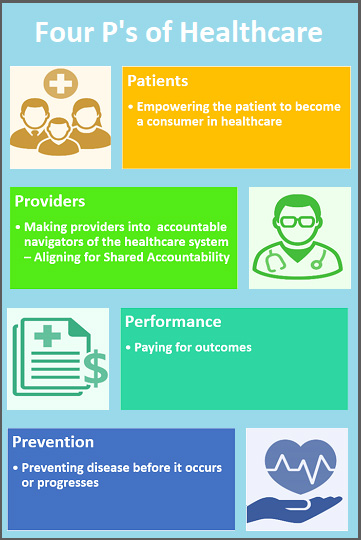
Featured Series
The Road to Value-Based Healthcare: Alternative Payment Models (APMs)
Tom Szostak and Lainie Hardman - Canon Medical USA | November 27, 2019
The Affordable Care Act of 2010 provided significant change in how healthcare is purchased and how health plans must meet minimum benefit requirements to be sold in the marketplace. One of the main goals for the ACA was to transition away from Volume-Based Healthcare to Value-Based Healthcare, so that payment incentives were based on delivering quality care as opposed to speeding through a high number of patients. Although the Trump administration has sought to repeal ACA, they support and champion value-based healthcare. The Secretary of Health and Human Services, Alex Azar, has made it a priority to achieve a value-based transformation through the pioneering of new payment models. At the Healthcare Payment Learning Action Network Symposium in 2018, Health & Human Services (HHS) Secretary Azar set a goal to transition to value-based healthcare by 2028 moving toward “a healthcare system focused on health, wellness, and outcomes”. An example of shared risk payment models are “Alternative Payment Models” or APMs, that provide incentives on delivering high-quality care, addressing health inequities, and cost containment.
What are Alternative Payment Models?
APMs are payment models that give added incentive payments to provide high-quality and cost efficient care. According to the Centers for Medicare and Medicaid Services (CMS), APMs can apply to a specific clinical condition, a care episode, or a population. CMS defines several types of APMs with different eligibility and criteria.
- APMs – Added incentive payments to provide high-quality and cost-effective care. Merit-based Incentive Payment System (MIPS) eligible clinicians participating in an APM are also subject to MIPS requirements.
- MIPS APMs – APM bases payment incentives on performance, cost/utilization, and quality measures. APM entities that participate must have an agreement with CMS and include one or more MIPS eligible clinicians.
- Advanced APMs – Must use certified Electronic Health Record (EHR) technology. Provides payment for covered professional services based on quality measures comparable to those used in the MIPS quality performance category; and either: (1) is a Medical Home Model expanded under CMS Innovation Center authority OR (2) requires participants to bear a significant financial risk.Benefits include a 5% bonus, exclusion from MIPS, and other APM-specific rewards.
- Advanced & MIPS APMs - Most Advanced APMs are also MIPS APMs. MIPS Eligible clinicians participating in Advanced APMs are included in MIPS if they do not meet the threshold for payments or patients sufficient to become a Qualifying APM Participant (QP). The MIPS eligible clinician will be scored under MIPS according to the APM scoring standard.
- All-Payer/Other-Payer Option - Starting in Performance Year 2019, eligible clinicians will be able to become Qualifying Alternative Payment Model Participant (QPs) through the All-Payer Option. To attain this Option, eligible clinicians must participate in a combination of Advanced APMs with Medicare and Other-Payer Advanced APMs. Other-Payer Advanced APMs are non-Medicare payment arrangements that meet criteria that are similar to Advanced APMs under Medicare. Eligible clinicians who are determined to be QPs will receive a 5% APM incentive payment in the payment year and will not be subject to the MIPS reporting requirements or payment adjustments2
Four “P’s” of Healthcare
Many tools have been created to fix healthcare; EHR, Telemedicine, Payment Bundles, etc., but none of these solutions, singularly, has been able to make care better, reduce costs, and result in a healthier population. How does a provider reach goals of providing better care at reasonable cost while improving the health of their community? Volume-based healthcare was based and incentivized on seeing as many patients as possible. Secretary Azar promotes the “Four P’s of healthcare” to help make the transition from volume-based to value-based healthcare.
- Patients – Empowering the patient to become a consumer in healthcare
- Providers – Making providers into accountable navigators of the healthcare system – Aligning for Shared Accountability
- Performance – Paying for outcomes
- Prevention – Preventing disease before it occurs or progresses1
APMs are designed to create these goals through payment incentives and risk sharing to make patient wellness a financial benefit. Secretary Azar has made it a priority to achieve value-based transformation through the pioneering of new payment models.

Industry Outlook on APMs
Over the past two years, Medicare delivery and payment reform has been a key focus of the federal government. Leaders in the public and private sector are looking to value-based healthcare as a solution for a higher quality of care and cost containment. As a result of these efforts, APMs are gaining adoptability in the healthcare industry. According to a measurement survey by HCPLAN APM:
- 91% of payers feel that Alternative Payment Model (APM) activity will increase.
- 45% - FFS-based/risk share bundled/episodes will increase most.
- 88% of payers believe that APM adoption will result in care that is better, affordable, and coordinated.3
Three Barriers to APMs
The goal to move toward value-based healthcare is shared among leaders in the healthcare industry and is one of the few federal government goals that has bipartisan support. Secretary Azar said that "We must transform payment to transform healthcare” but also said that the transformation is moving too slow. Although value-based healthcare has support from both sides of the political aisle, both value-based healthcare and APM's face roadblocks in the healthcare industry. The top three barriers to APM adoption are:
- Provider willingness to take on financial risk
- Provider ability to operationalize
- Provider interest/readiness*
Although one of the goals of ACA was to transition from volume-based healthcare care to value-based healthcare, ACA provided a greater focus on reforming the health insurance market than aligning payment for value.
For well over a decade, the federal government has engaged in efforts to align payment in the Medicare program with the quality of care provided to beneficiaries. Although one of the goals of ACA was to transition from volume-based healthcare care to value-based healthcare, ACA provided a greater focus on reforming the health insurance market than aligning payment for value. APMs are intended as a tool to provide both incentives and structure to providers as they make the transition to value-based healthcare.
A Solution for Unsustainable Healthcare Spending?
Currently the burden of paying for healthcare services is borne by the federal government, employers and consumers. The annual rising costs of healthcare has prompted employers to redesign benefit programs so that a greater portion is paid by the employee/consumer. The Population in the United States is rapidly aging and by 2030, 20% of the population will be insured through Medicare.4 The current rate of comsumption and healthcare spending has become unsustainable. Shared risk payment models like APMs are intended to transform how healthcare is delivered in the United States by providing a higher quality of care, lower costs, and promoting health and wellness.
Tom Szostak is the Director of Healthcare Economics for Canon Medical Systems USA and an expert on health care policy. He serves as an advisor to purchasing organizations, health systems and medical societies in matters regarding health economics, policy, reform and reimbursement. He has authored a series of papers on the Affordable Care Act for AHRA and published white papers on the economics and outcomes on the acute stroke population through changing clinical pathways.
Lainie Hardman is the Manager for Project Education Services for Canon Medical Systems USA and the editor of learning.us.medical.canon.
Sources
1Healthcare Payment Learning Action Network Symposium – October 2018
2https://qpp.cms.gov/apms/overview
32018 APM Measurement Effort, https://hcp-lan.org/2018-apm-measurement/
4CBO Federal Debt & Statutory Limit, January 2018, https://www.cbo.gov/publication/53514



